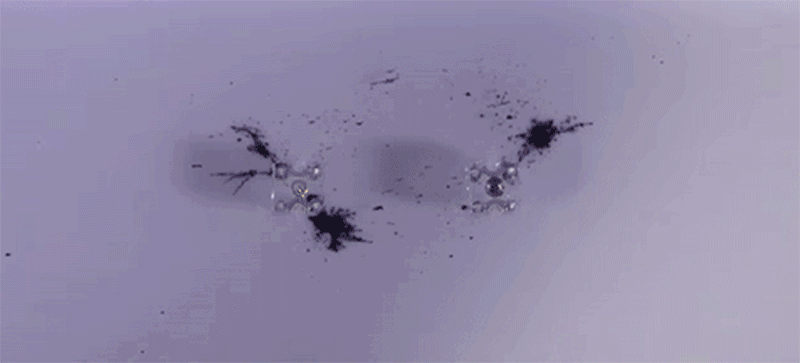
Scientists from Rice University have demonstrated that Tesla coils can wirelessly induce carbon nanotubes to self-assemble into wire-like patterns by electrifying them with its powerful electric field. The phenomenon is called “Teslaphoresis,” and the resulting wires can also draw energy from the force field to power circuits. In one experiment, the self-assembled nanotubes lit an LED by forming a circuit and absorbing energy from the Tesla coil.
Rice chemist Paul Cherukuri explains that his team produced the effect by quickly oscillating positive and negative charges in each nanotube, creating a tractor beam-like effect on the nanotubes that caused particles to draw toward one another across noticeable distances. The effect is quite profound, as previous attempts to move small objects with electric fields were limited to ultra-short distances while the new process moves particles up to several feet. “It is such a stunning thing to watch these nanotubes come alive and stitch themselves into wires on the other side of the room,” explains Cherukuri.
Cherukuri and his team decided that nanotubes make the perfect initial test subject, given that Rice University invented the HiPco single carbon nanotube. The surprising results suggest the technique may be up-scaled to incorporate other materials. “With Teslaphoresis, we have the ability to massively scale up force fields to move matter remotely,” explains Cherukuri.
The range of the current bench-top Tesla coil is limited to a few feet, but the team looks forward to future research now that a more robust system is under development. Cherukuri envisions patterned surfaces and multiple Tesla coils will allow the nano-sized particles to assemble in much more complex circuits, enabling new possibilities in nanotechnology, biotech, and molecular manufacturing.
“These nanotube wires grow and act like nerves, and controlled assembly of nanomaterials from the bottom up may be used as a template for applications in regenerative medicine,” said Lindsey Bornhoeft, the paper's lead author and a biomedical engineering graduate student at Texas A&M University.
While Tesla coils were invented by Nikola Tesla in 1891 for the purpose of delivering wireless electrical energy, the Teslaphoresis phenomenon was entirely unknown to him. Rice University team’s findings are just beginning to scratch the surface.
Advertisement
Learn more about Electronic Products Magazine





